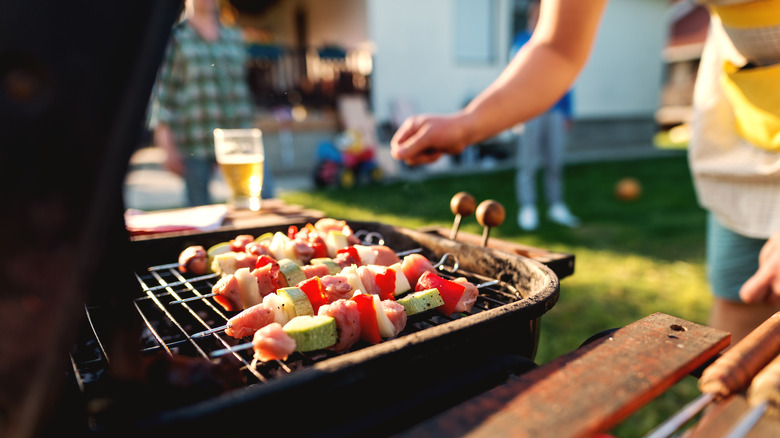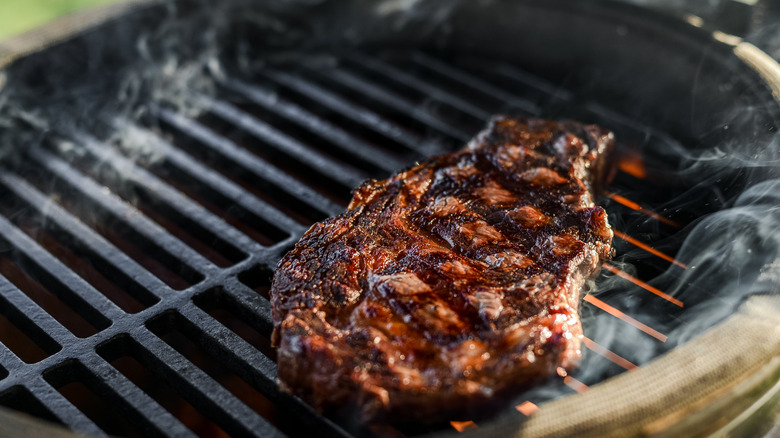The 2-Zone Grilling Rule You Need To Follow
While at-home bakers may follow "Ace of Cakes" star Duff Goldman's rules of baking, grill enthusiasts religiously abide by Bobby Flay's 10 commandments of grilling. The professional grill master is a crucial resource when it comes to all things grilling, and he's happy to share his insider tips with fans. Sitting down with Food Network — which his website notes has been his home for the last 25 years – Flay outlines his top 10 rules for grilling, including grate management, burger basics, and the anatomy of your grill's lid.
Flay is also revolutionizing the way people approach the very process of using their grill with his two-zone grilling rule. As he explains, your grill should always have two different zones of heat: direct and indirect. Direct heat is where most of the grilling happens and where raw foods should first be placed. Then, once almost fully cooked, Flay recommends transitioning those foods (meats and veggies) to the indirect heat zone where they can continue to cook without getting overcooked or burned.
How to set up zones on your grill
No matter your skill level, anyone can learn how to rearrange their grill into Bobby Flay's recommended two-zone set-up. Just be ready to wrangle with some charcoal. According to Lifehacker, the first and most important step is to divide your charcoal grill into two sections. One half of the grill should be filled with charcoal (the direct heat zone) while the other half is empty (the indirect zone). Next, make sure the exhaust vent is in alignment with the indirect side so the heat and smoke have an escape route.
Once your meats and veggies are prepped and ready for grilling, place them in the direct zone. Because this zone generates the most heat, you want all the searing to be done on that side. As Lifehacker explains, the indirect zone is great for roasting, slow-cooking, or reheating food, because it operates similarly to an oven. That said, you may want to move food from direct to indirect heat towards the end to avoid burning or scorching your meal.
To recap: the direct heat zone is the same as cooking food over a flame whereas the indirect zone is ideal for keeping food warm until serving, like a hot plate. You just don't want to keep foods in either zone for longer than necessary because they will continue to cook (at different speeds) and all your work will go to waste.

